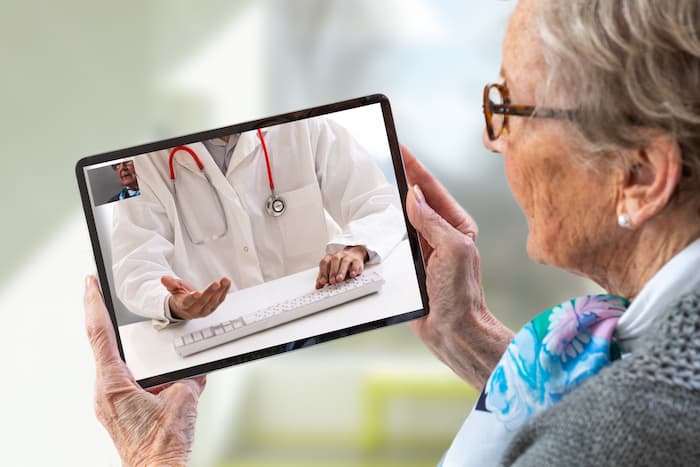The ongoing pandemic has necessitated and accelerated the adoption of telehealth for remote healthcare services to meet public health needs while maintaining compliance with social distancing regulations. Telehealth, in simple terms, is the integration of digital information and communication technology into healthcare.
The transition from in-person to virtual communication in this sector has been ramping up, as patients and healthcare providers all over the world are making the shift from conventional care to telehealth. Adaptation comes with its set of challenges, especially for healthcare consumers who are less tech-savvy and more reluctant to adopt telehealth and telemedicine technology. Advanced software and tools have emerged to smooth the transition and improve the quality of virtual healthcare as needs arise and technical issues get resolved.
Videoconferencing and virtual communication
While a simple phone conversation may suffice for setting appointments or updating patient records, a valid question persists: Are phone calls really suitable for telehealth consults? A consultation with a doctor or any other healthcare provider should be personal, strictly confidential and conducted with utmost sensitivity and integrity. Clarity of visual contact is just as valuable as clear verbal communication when it comes to remote consultations. To address the need for both in telehealth, video conferencing technology has become more advanced and widely used in healthcare telecommunications, and enables more effective and personalized remote care.
Remote patient monitoring technology
Monitoring and management tools have been launched as an integral part of telehealth software platforms, to supplement the remote care experience for physicians and patients. Extended care and follow-ups are essential to continuous and consistent patient care. This requires patient engagement and the ability to get updates on their medications, treatment plans and recurring appointments. Medical professionals also need ongoing communication with their patients to ensure they’re staying on track and informed.
Scalability of digitalization
There are a variety of telehealth and telemedicine software, tools and options available that provide digital and virtual healthcare solutions for different medical needs and clinical purposes. Technologies are designed to be scalable for different sizes of organizations; some are more suitable for small practices and others are capable of being used by larger entities, such as hospitals and interconnected health communities.

Small practices and independent physicians
Choosing the right virtual care platform for a small-scale or independent medical practice should involve careful assessment of what specific needs are to be addressed by this technology. Small practices have less cash flow and can’t afford to invest exorbitant amounts of money into a technology that could fail, nor can they afford to lose patients as a result. The decision should be based on 2 key issues:
- What are the needs of the practice? What scope of medical services does it offer?
- Who makes up the main patient population? What demographics and age groups are the targeted majority? What style of communication works best for these patients?
Hospitals and larger health clinics
With larger entities, collaboration is crucial to connect doctors and clinicians within their network. This enables large data storage and sharing of electronic health records, while protecting patient confidentiality and privacy. With IoT (Internet of Things) technology, medical professionals can access and transmit patients’ health data. Remote patient monitoring systems streamline the process of determining diagnoses and treatment options, and improve patient engagement. Data security is one of the most important features in telehealth and telemedicine technologies used within a large medical community or hospital setting.
Choosing the Right Technology
When deciding what software and tools are best for your needs, consider what needs are front and center. Integration and compatibility with existing technology should top the list of priorities. It should also be consumer and clinician-friendly, and not too complicated or challenging to use for different purposes. Data protection, security and privacy are key to delivering quality healthcare. Supporting hardware is essential to guarantee secure and dependable connectivity and prevent system malfunctions when in use. Top-line technologies will deliver on most or all of these features, but some are more advanced than others in certain technical areas. Many products are bundled together so a range of useful tools can be accessed from one platform.
Conclusion
The bottom line is that quality of health services is heavily dependent on personal, confidential communication between doctors and patients, and the chosen virtual platform should facilitate the experience without compromising the most valued aspects of healthcare and medicine. With deployment and implementation of the right tools, patients can feel confident and benefit from the care of their preferred providers on a remote basis. Physicians and medical personnel on all levels can feel reassured that they’re delivering the best possible healthcare under ever-changing and challenging circumstances.
The Editorial Team at Healthcare Business Today is made up of skilled healthcare writers and experts, led by our managing editor, Daniel Casciato, who has over 25 years of experience in healthcare writing. Since 1998, we have produced compelling and informative content for numerous publications, establishing ourselves as a trusted resource for health and wellness information. We offer readers access to fresh health, medicine, science, and technology developments and the latest in patient news, emphasizing how these developments affect our lives.








